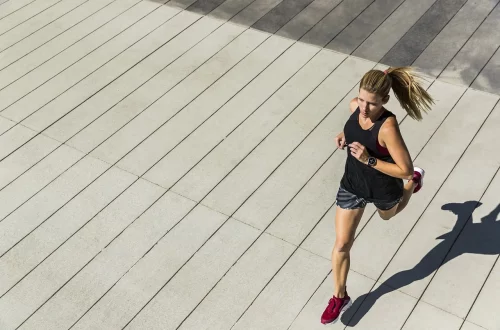
Understanding Why Your Dog Is Shaking After Surgery and What to Do
After undergoing surgery, many pet owners notice their dogs exhibiting unusual behaviors, one of which is shaking or trembling. This reaction can be concerning and often leaves owners feeling helpless, as they struggle to understand the underlying reasons for their pet’s distress. Dogs may shake for a variety of reasons, including pain, anxiety, or even as a response to anesthesia. The post-surgical period can be stressful not only for the pet but also for the owner, who is often eager to see their beloved companion back to their normal self.
Navigating the recovery process can be daunting, especially when faced with unexpected symptoms like shaking. Understanding why your dog may be trembling after surgery can help alleviate some of the stress and anxiety associated with post-operative care. It is essential to recognize that while some shaking may be normal, other instances could signal a more serious issue requiring veterinary attention. By familiarizing yourself with the possible causes of post-surgical shaking, you can take proactive steps to ensure your dog’s comfort and recovery.
In this article, we will delve into the various factors that can cause your dog to shake after surgery, as well as practical steps you can take to help them through this challenging time.
Common Causes of Shaking After Surgery
One of the primary reasons dogs shake after surgery is due to the effects of anesthesia. Anesthetic agents can linger in a dog’s system for hours or even days, leading to tremors as their body processes and eliminates these substances. This is particularly common in older dogs or those with pre-existing health conditions. Generally, shaking from anesthesia will subside as the drugs are metabolized, but it’s essential to monitor your dog’s behavior during this time, as extreme or prolonged shaking may warrant a call to your veterinarian.
Another common cause of post-surgical shaking is pain. After surgery, dogs may experience discomfort as part of the healing process. Pain can manifest in various ways, including whining, restlessness, or shaking. If you suspect your dog is in pain, consult your veterinarian, who can recommend appropriate pain management strategies. This could include prescribed medications or alternative therapies designed to alleviate discomfort and promote healing.
Anxiety is also a significant factor that can contribute to shaking in dogs after surgery. The experience of surgery can be stressful for pets, and many may feel anxious or frightened during their recovery. Changes in their environment, such as being in a veterinary clinic or the unfamiliarity of home post-surgery, can heighten this anxiety. If your dog is shaking due to stress, creating a calm and safe space can help. Consider using soft blankets, quiet music, or even pheromone diffusers to alleviate their anxiety.
Additionally, hypothermia is another potential cause of shaking in post-surgical dogs. Surgical procedures often require the use of cooling methods to maintain a stable body temperature. As a result, dogs may wake up from surgery feeling cold, leading to shivering as their bodies attempt to warm up. It’s important to keep your dog warm after surgery, using blankets or heated pads (with caution) to ensure they are comfortable as they recover.
Understanding these common causes of shaking can help pet owners respond appropriately, ensuring their dogs receive the care and attention they need during the recovery process.
How to Help Your Dog During Recovery
Helping your dog feel comfortable and secure during their recovery is crucial for their overall well-being. First and foremost, provide a quiet and calm environment where your dog can rest without disturbances. This will help alleviate stress and allow them to focus on healing. Avoid loud noises, sudden movements, or other pets that may cause anxiety. A designated recovery area, complete with their favorite bed and toys, can help create a sense of safety.
Monitoring your dog’s temperature is also essential. If you suspect that your dog may be cold and shaking due to hypothermia, use a thermometer to check their temperature. A dog’s normal body temperature ranges from 101 to 102.5 degrees Fahrenheit. If your dog’s temperature falls below this range, gently warm them with blankets, but avoid overheating, as this can cause additional stress.
Another effective way to support your dog during recovery is to ensure they are comfortable. This might involve administering prescribed medications as directed by your veterinarian, which can help manage pain and reduce anxiety. Additionally, consider consulting your vet about alternative therapies, such as acupuncture or massage, which can provide relief and promote healing.
Staying in close communication with your veterinarian is vital throughout your dog’s recovery. They can provide specific guidelines tailored to your dog’s needs and help address any concerning behaviors, including persistent shaking. If your dog’s shaking does not improve or is accompanied by other symptoms—such as vomiting, lethargy, or difficulty breathing—contact your veterinarian immediately for guidance.
Lastly, it’s essential to maintain a consistent routine during your dog’s recovery. This includes feeding them at the same times each day and taking them out for gentle walks as permitted by your vet. A predictable routine can provide comfort and familiarity, helping reduce anxiety and promote a sense of normalcy.
When to Seek Veterinary Assistance
While shaking after surgery can be common, there are certain situations where veterinary assistance is necessary. If your dog’s shaking persists for more than a few hours post-surgery or becomes more severe, it is essential to reach out to your vet. Prolonged shaking can indicate an underlying issue that requires immediate attention.
Additionally, if you notice any other concerning symptoms alongside the shaking, such as excessive drooling, difficulty standing, or signs of distress, do not hesitate to contact your veterinarian. These symptoms could be indicative of complications from the surgery, such as infection or adverse reactions to anesthesia.
It’s also important to be vigilant about your dog’s incision site. If you observe swelling, redness, or discharge, these could be signs of infection. In such cases, your veterinarian should be consulted immediately. They may need to assess the situation and, if necessary, provide treatment to prevent further complications.
Another critical time to seek veterinary help is if your dog exhibits any signs of severe pain. While some discomfort is normal post-surgery, extreme pain can be a sign that something is wrong. Symptoms of severe pain may include whining, refusal to eat, or an inability to move comfortably. If you suspect your dog is in severe pain, get them evaluated as soon as possible.
Finally, if your dog’s shaking is accompanied by neurological symptoms such as seizures, disorientation, or loss of coordination, these can be serious indicators requiring urgent veterinary care. Never ignore these signs, as they could point to life-threatening conditions.
In summary, while shaking after surgery may be relatively common, being proactive and observant can help ensure your dog’s recovery goes smoothly. Providing a supportive environment, monitoring for signs of distress, and consulting with your veterinarian when needed can significantly enhance your pet’s healing experience.
**Disclaimer:** This article is for informational purposes only and is not intended as medical advice. Always consult your veterinarian for any health concerns or questions regarding your pet’s well-being.




